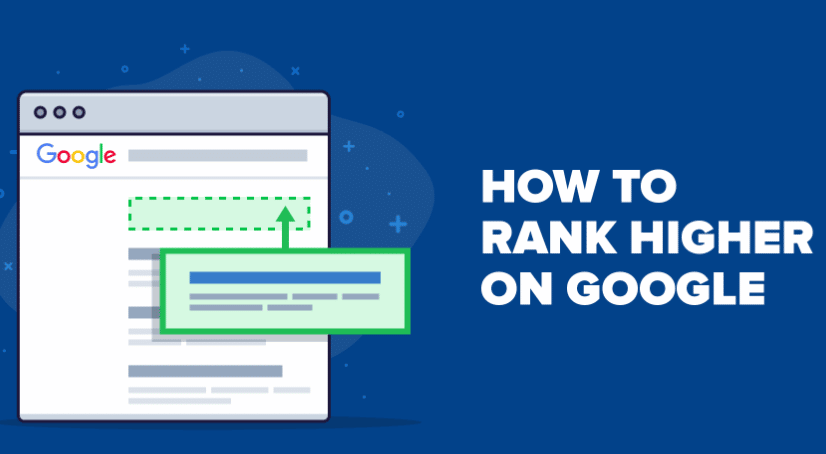
Google is the most popular search engine in the world, handling over 3.5 billion searches per day. However, in order to have your brand recognized, you need to be able to stand out from the rest of the competition by ranking first. Although it can be challenging to achieve this, it’s not impossible. It all comes down to understanding how SEO works and how you can apply these common techniques to make your website more visible to Google.
Table of Contents
Do Your Keyword Research
The first step to ranking on Google is understanding what keywords you want to rank for. Once you know this, you can start incorporating these keywords into your website content, titles, and descriptions. However, it’s important that you don’t stuff your keywords in order to avoid being penalized by Google. Instead, use them sparingly and focus on providing valuable, relevant content to your audience.
When it comes to keywords, you don’t want to use generic terms like “belts” or “clothing” because you’ll be competing with too many other brands. Instead, focus on using long-tail keywords that are more specific to what you’re selling. For example, “men’s leather belts” or “women’s blue jeans size 2.” These keywords are less competitive, but they’re also more likely to convert since they indicate a higher degree of intent.
Use Title Tags and Meta Descriptions
Title tags and meta descriptions are HTML elements that help Google understand what your website is about. Title tags should be unique and descriptive, while meta descriptions should briefly summarize your page’s content. These elements are important because they show up in the search results, so make sure you include keywords that accurately reflect the page’s content.
Additionally, your title tags and meta descriptions should be unique to each page on your website. This gives Google more information to work with and helps you rank for a variety of different keywords.
Build High-Quality Backlinks
Backlinks are links from other websites that point to your website. Google views these links as votes of confidence, so the more high-quality backlinks you have, the better your chances of ranking on Google.
There are a few different ways to build backlinks. The most common is through guest blogging. This involves writing articles for other websites in your industry and including a link back to your website in your author bio. You can also build backlinks by creating helpful resources like infographics or ebooks to share on social media or other websites.
Optimize Your Website for Mobile
Google is now using mobile-first indexing, which means that the company is primarily looking at the mobile version of your website when determining your rank. This is because more and more people are using mobile devices to access the internet, so it’s important that your website is optimized for these users.
Some common ways to optimize your website for mobile include using a responsive design, increasing font sizes, and making sure your buttons and links are easy to tap. You should also avoid using pop-ups and other intrusive elements that can make the mobile experience more difficult for users.
Understand Your Competitors
If you want to rank on Google and grow your business, you need to understand what your competitors are doing. Take a look at their websites and see what keywords they’re targeting. You can also use tools like SEMrush and Spyfu to see what keywords they’re bidding on in Google AdWords. This will give you a good idea of the kinds of keywords you should be targeting.
Additionally, take a look at their backlinks and see where they’re getting them from. If you can get links from the same websites, you’ll be in a good position to compete for the same keywords. Understanding your competition and their digital marketing strategy can also help you identify areas in which you can differentiate yourself.
Make Sure To Internally Link Your Content
One of the most important things you can do to optimize your website is to link your pages together. This helps Google understand the hierarchy of your website and makes it easier for users to navigate.
When linking your pages, make sure to use keyword-rich anchor text. This will help Google understand what each page is about and will give you a boost in the search results. For example, if you’re linking to your Home page from your About page, you could use the anchor text “homepage” or “main website.”
Use Google Search Console
Google Search Console is a free tool that allows you to see how Google views your website. This is valuable information because it can help you understand what areas need improvement. Some of the things you can do with Google Search Console include submitting your sitemap, fixing 404 errors, and setting up redirects.
Additionally, Google Search Console can help you improve your click-through rate by showing you which of your pages are ranking in the search results. You can then make sure that these pages are optimized for your target keywords.
Reduce Loading Times
Google has stated that website speed is a ranking factor, so it’s important to make sure your website loads quickly, as said by Digital Authority Partners. You can do a few different things to improve your website’s speed, including optimizing your images, using a content delivery network, and minifying your CSS and JavaScript.
Additionally, you should avoid using too many plugins on your website, as these can slow down your site. If you’re using WordPress, a few speed optimization plugins can help, such as W3 Total Cache and WP Super Cache.
Conclusion
Ranking on Google is a goal for any website owner. By following the tips in this article, you can improve your chances of ranking on Google and getting more traffic to your website.

